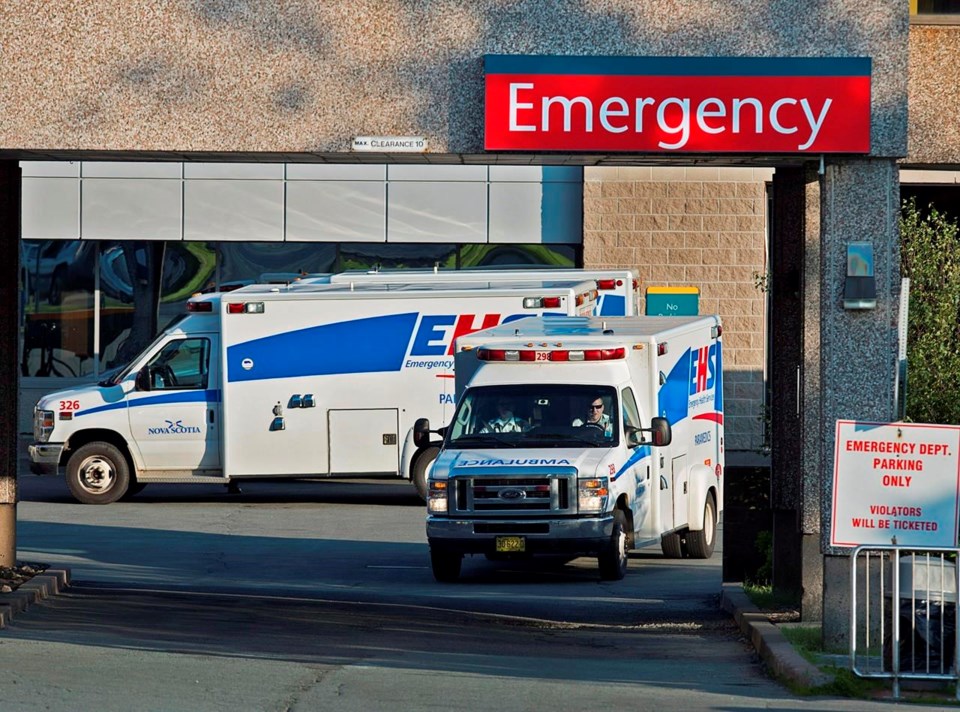HALIFAX — Emergency room closures due to staffing shortages in Nova Scotia have doubled year over year, a situation the province's health minister says shows that hospitals are being pushed to their limits.
Nova Scotia ERs were "temporarily" closed for a total of 31,698 hours in the 12-month period ending March 31, 2022 — more than twice as long as the same period a year prior, when they were closed for 15,056 hours, said a government report released Wednesday.Â
The annual accountability report on Nova Scotia’s emergency departments said temporary ER closures are “typically” due to the unavailability of emergency doctors, nurses or paramedics.
“To address the pressures on our emergency departments and other areas, we need to retain our health-care professionals and recruit more,” Health Minister Michelle Thompson said in a statement Wednesday in reaction to the report.
These "temporary" closures mostly occur in rural hospital ERs, the report said, because the government is not permitted to close eight of the province's large regional hospital sites, which are required to operate 24 hours a day.
In contrast to temporary closures, there are scheduled closures at seven of the province's emergency rooms that don't operate 24 hours a day. The annual report said that the total number of scheduled closures dropped year over year, for a total of 45,607 hours for the 12 months ending March 31, 2022, compared to 54,272 hours during the same period the year prior.
Between temporary and scheduled closures, Nova Scotia’s emergency departments were closed 11 per cent of the time over the reporting period, up from six per cent the year earlier.Â
These figures show “what our health-care professionals and many Nova Scotians already know — our emergency departments have been pushed to the limit,” Thompson said.
The minister added that while ER closures have been a serious issue for years, the system has been further strained by the COVID-19 pandemic and a recent spike in respiratory illnesses, all the while “responding to unprecedented population growth” in the province.Â
Thompson acknowledged that many communities are dealing with these closures, adding that at the ERs that are open, patients are waiting “too long for care.”
“We don't want any Nova Scotian to think twice about seeking care, which is why we are working every day to address emergency department issues.”
The minister said her department is expanding its planned health-care infrastructure build in Halifax and creating a medical residency stream to help internationally trained Nova Scotian doctors return home to practise. She said the government is trying to recruit more nurses and physicians and is guaranteeing a job to all nurses who graduate in the province.
Thompson also said mobile primary-care clinics will continue to be deployed in communities where “pressure is greatest.”
As of Dec. 1, more than 125,200 Nova Scotians — 12.6 per cent of the province’s population — are registered on a wait-list for primary care, either for a doctor or a nurse practitioner. At this time last year, there were about 82,000 people registered on the list.
This report by The Canadian Press was first published Dec. 22, 2022.
---
This story was produced with the financial assistance of the Meta and Canadian Press ߣÄĚÉçÇř Fellowship.
Lyndsay Armstrong, The Canadian Press



